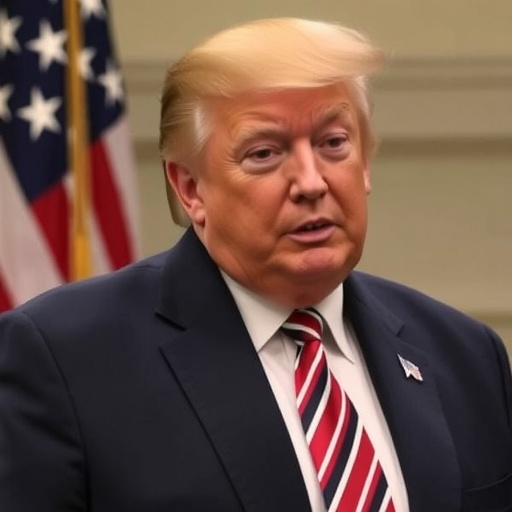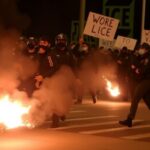Trump Administration’s CDC layoffs Spark Outrage: 1,300 Jobs Cut While ICE and Military Funding Flows During Shutdown
In a move that’s sending shockwaves through the public health community, the Trump administration has terminated 1,300 employees at the Centers for Disease Control and Prevention (CDC), slashing the agency’s workforce by a staggering one-quarter in just eight months. This dramatic reduction comes amid a 20-day government shutdown, where funding for essential disease prevention efforts has been sidelined in favor of bolstering Immigration and Customs Enforcement (ICE) operations and military programs. Critics are sounding the alarm, warning that these CDC layoffs and broader public health cuts could leave the nation vulnerable to emerging threats like pandemics and outbreaks.
The terminations, announced late last week, target critical roles including pandemic preparedness experts, measles outbreak response teams, and biodefense specialists. As the shutdown drags on, the White House has prioritized ICE funding and military expenditures, drawing sharp rebukes from health experts and lawmakers who argue that national security should encompass more than just borders and battlefields.
CDC Workforce Devastated: 1,300 Jobs Vanish in Eight Months
The scale of the CDC layoffs is unprecedented in recent history. According to internal CDC documents obtained by investigative journalists, the agency has lost approximately 25% of its staff since the start of the fiscal year. This isn’t a gradual attrition; it’s a swift, shutdown-fueled purge that’s hollowing out the very backbone of America’s disease surveillance and response capabilities.
Dr. Elena Ramirez, a former CDC epidemiologist who was among those let go, shared her disbelief in an exclusive interview. “We were on the front lines preparing for the next big outbreak—whether it’s flu, Ebola, or something we haven’t even seen yet—and now we’re being told our expertise isn’t essential,” she said. “It’s not just numbers; these are dedicated professionals whose absence will be felt in every lab and field office across the country.”
Statistics paint a grim picture. The CDC’s Division of Global Health Protection, responsible for international outbreak monitoring, has seen a 30% staff reduction, while domestic teams tracking vaccine-preventable diseases like measles have been cut by nearly 40%. In the past year alone, measles cases in the U.S. have surged by over 300%, largely due to declining vaccination rates—a trend that outbreak response teams were actively combating before the layoffs hit.
These cuts come at a precarious time. The World Health Organization recently warned of potential global hotspots for infectious diseases, including resurgent threats in Europe and Asia. Without a robust CDC presence, experts fear the U.S. could be caught flat-footed, much like the early days of the COVID-19 pandemic when understaffed agencies struggled to coordinate responses.
Shutdown Priorities: ICE and Military Get Full Funding Amid Health Crisis
While the Trump administration grapples with the shutdown’s fallout, the allocation of resources reveals stark priorities. Reports from the Department of Homeland Security indicate that ICE funding has not only been maintained but expanded, with an additional $500 million earmarked for detention facilities and border enforcement operations. Similarly, the Pentagon has confirmed uninterrupted funding for military training exercises and procurement, totaling billions even as civilian agencies like the CDC face furloughs and terminations.
This disparity has fueled bipartisan criticism. Senator Maria Gonzalez (D-CA), a member of the Senate Health Committee, issued a statement blasting the decisions: “In the middle of a shutdown that’s already straining our economy, we’re choosing to fund walls and weapons over the health of our citizens. Disease prevention isn’t optional—it’s a matter of life and death.” On the Republican side, Representative Tom Hargrove (R-TX) expressed cautious concern, noting, “We support strong borders and a ready military, but not at the expense of basic public health infrastructure.”
The funding mechanics are telling. Under the shutdown rules, certain ‘exempt’ categories like national security and immigration enforcement receive automatic appropriations, bypassing the congressional gridlock that’s frozen other budgets. The CDC, classified under discretionary health spending, falls into the vulnerable non-exempt bucket. This has led to immediate impacts: field offices in high-risk areas like Atlanta and San Diego are operating at half capacity, delaying routine inspections and data analysis.
Historical context underscores the irony. During the 2013 shutdown, the CDC managed to retain key personnel through emergency measures, averting major disruptions. But this time, with deeper ideological divides, such safeguards were absent, allowing the public health cuts to accelerate unchecked.
Critical Teams Dismantled: From Measles Response to Biodefense Gaps
Perhaps the most alarming aspect of these CDC layoffs is the targeted elimination of specialized units. The agency’s Pandemic Preparedness and Response team, which simulates and plans for global health emergencies, has lost over 200 experts. These professionals were instrumental in developing models that predicted the spread of diseases like Zika and the novel coronavirus variants.
Measles outbreak teams, already stretched thin by a 2019 resurgence that saw over 1,200 cases—the highest in 25 years—have been hit hardest. “We’re talking about nurses, contact tracers, and lab technicians who go door-to-door to contain spread,” explained Dr. Marcus Lee, director of a now-understaffed regional office. “With these cuts, a single cluster could balloon into an epidemic before we even mobilize.”
Biodefense specialists, focused on threats like anthrax or engineered pathogens, represent another casualty. The CDC’s Office of Public Health Preparedness and Response, which coordinates with the FBI on bioterrorism, has seen its budget slashed by 15%, leading to the termination of 150 personnel. This comes as intelligence reports highlight rising risks from non-state actors experimenting with biological agents.
To illustrate the ripple effects, consider a recent incident in Texas where a suspected measles exposure went uninvestigated for 48 hours due to staffing shortages. Public health officials attribute this directly to the shutdown-induced public health cuts, warning that similar delays could prove catastrophic in a larger-scale event.
Stakeholders beyond the CDC are feeling the pinch. State health departments, which rely on federal grants for 40% of their funding, report delays in vaccine distribution and training programs. The American Public Health Association has launched a petition drive, amassing over 50,000 signatures calling for the reinstatement of laid-off workers.
Expert Warnings: Long-Term Risks to National Health Security
As the dust settles on these announcements, health policy experts are painting a dire picture of the future. Dr. Anthony Fauci, director of the National Institute of Allergy and Infectious Diseases, has long advocated for robust disease prevention funding. In a recent op-ed for The New England Journal of Medicine, he wrote, “Reducing the CDC’s capacity is like dismantling your home’s smoke detectors while stocking up on fire extinguishers for the garage—it’s a misallocation that invites disaster.”
Analysts from the Brookings Institution estimate that every dollar invested in public health preparedness yields $10 in economic savings by averting outbreaks. Yet, under the Trump administration, such investments have plummeted. From 2017 to 2020, CDC funding for global health security dropped by 18%, contributing to vulnerabilities exposed during the Ebola and COVID-19 crises.
International repercussions are mounting too. Partner countries in Africa and Southeast Asia, where the CDC funds surveillance networks, are scrambling to fill the void. A World Bank report highlights how U.S. pullbacks could lead to a 20% increase in undetected outbreaks worldwide, potentially boomeranging back to American shores via air travel.
Lawmakers are mobilizing. A coalition of 75 House members has introduced emergency legislation to restore CDC funding, tying it to shutdown resolution talks. Meanwhile, advocacy groups like Families Fighting Flu are organizing town halls to amplify voices from affected communities, emphasizing the human cost of these policy choices.
Looking ahead, the implications are profound. As flu season ramps up and global travel resumes post-pandemic, a weakened CDC could mean slower responses, higher infection rates, and strained hospitals. The shutdown may end soon, but the scars from these public health cuts—and the precedent of prioritizing ICE funding and military over health—could linger for years, reshaping America’s approach to disease prevention.
The path forward hinges on congressional action. If bipartisan pressure mounts, reinstated funding could rebuild teams and restore morale. But if political stalemates persist, experts warn of a ‘hollowed-out’ health system ill-equipped for the threats of tomorrow. As one laid-off CDC veteran put it, “We’re not just losing jobs; we’re losing our shield against the invisible enemies that don’t respect borders or budgets.”








